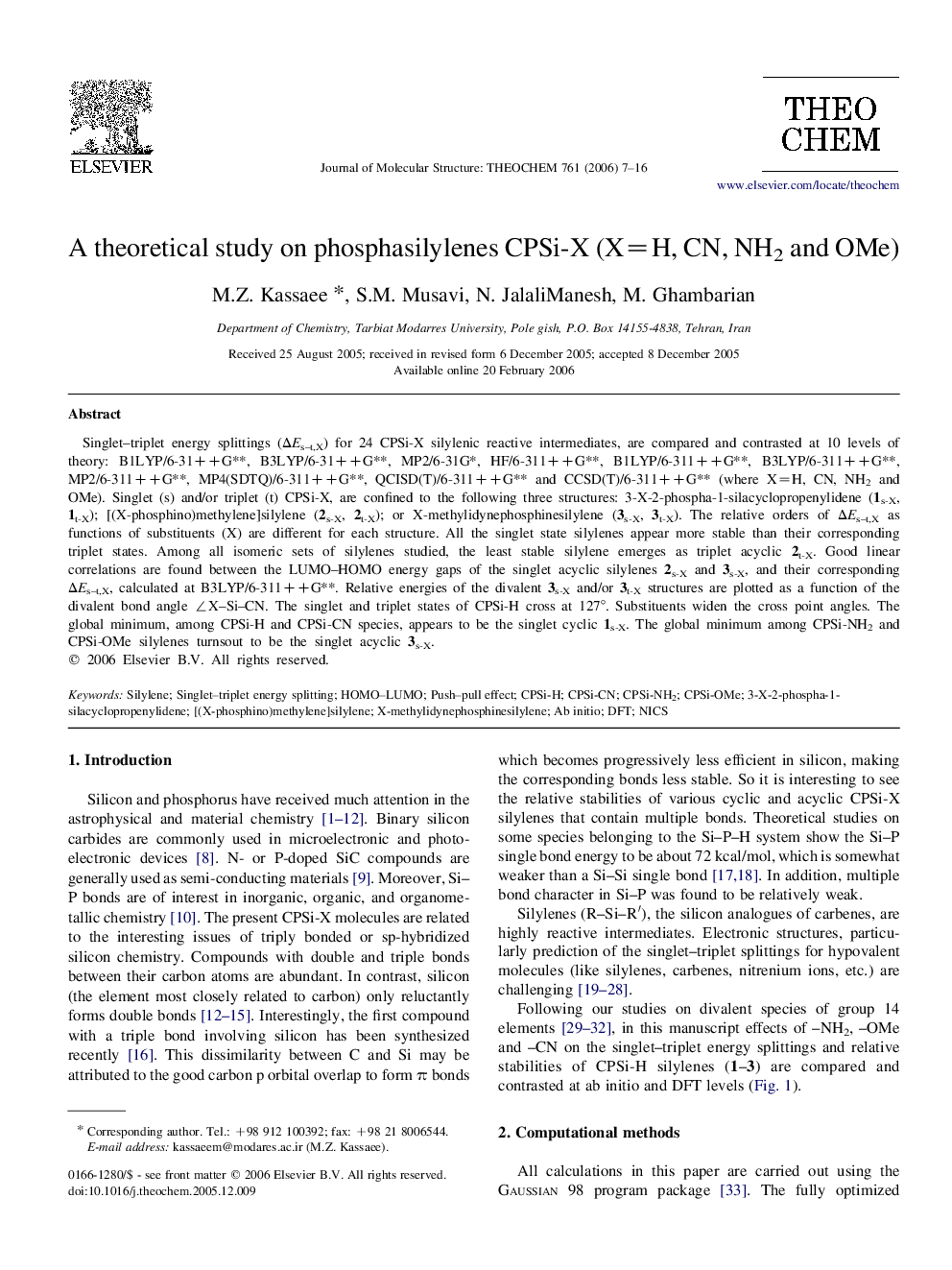| کد مقاله | کد نشریه | سال انتشار | مقاله انگلیسی | نسخه تمام متن |
|---|---|---|---|---|
| 5418450 | 1506996 | 2006 | 10 صفحه PDF | دانلود رایگان |
عنوان انگلیسی مقاله ISI
A theoretical study on phosphasilylenes CPSi-X (X=H, CN, NH2 and OMe)
دانلود مقاله + سفارش ترجمه
دانلود مقاله ISI انگلیسی
رایگان برای ایرانیان
کلمات کلیدی
موضوعات مرتبط
مهندسی و علوم پایه
شیمی
شیمی تئوریک و عملی
پیش نمایش صفحه اول مقاله

چکیده انگلیسی
Singlet-triplet energy splittings (ÎEs-t,X) for 24 CPSi-X silylenic reactive intermediates, are compared and contrasted at 10 levels of theory: B1LYP/6-31++G**, B3LYP/6-31++G**, MP2/6-31G*, HF/6-311++G**, B1LYP/6-311++G**, B3LYP/6-311++G**, MP2/6-311++G**, MP4(SDTQ)/6-311++G**, QCISD(T)/6-311++G** and CCSD(T)/6-311++G** (where X=H, CN, NH2 and OMe). Singlet (s) and/or triplet (t) CPSi-X, are confined to the following three structures: 3-X-2-phospha-1-silacyclopropenylidene (1s-X, 1t-X); [(X-phosphino)methylene]silylene (2s-X, 2t-X); or X-methylidynephosphinesilylene (3s-X, 3t-X). The relative orders of ÎEs-t,X as functions of substituents (X) are different for each structure. All the singlet state silylenes appear more stable than their corresponding triplet states. Among all isomeric sets of silylenes studied, the least stable silylene emerges as triplet acyclic 2t-X. Good linear correlations are found between the LUMO-HOMO energy gaps of the singlet acyclic silylenes 2s-X and 3s-X, and their corresponding ÎEs-t,X, calculated at B3LYP/6-311++G**. Relative energies of the divalent 3s-X and/or 3t-X structures are plotted as a function of the divalent bond angle â X-Si-CN. The singlet and triplet states of CPSi-H cross at 127°. Substituents widen the cross point angles. The global minimum, among CPSi-H and CPSi-CN species, appears to be the singlet cyclic 1s-X. The global minimum among CPSi-NH2 and CPSi-OMe silylenes turnsout to be the singlet acyclic 3s-X.
ناشر
Database: Elsevier - ScienceDirect (ساینس دایرکت)
Journal: Journal of Molecular Structure: THEOCHEM - Volume 761, Issues 1â3, 17 March 2006, Pages 7-16
Journal: Journal of Molecular Structure: THEOCHEM - Volume 761, Issues 1â3, 17 March 2006, Pages 7-16
نویسندگان
M.Z. Kassaee, S.M. Musavi, N. JalaliManesh, M. Ghambarian,